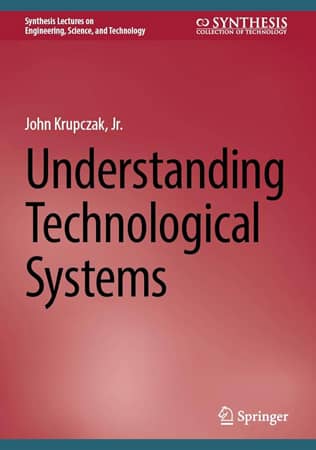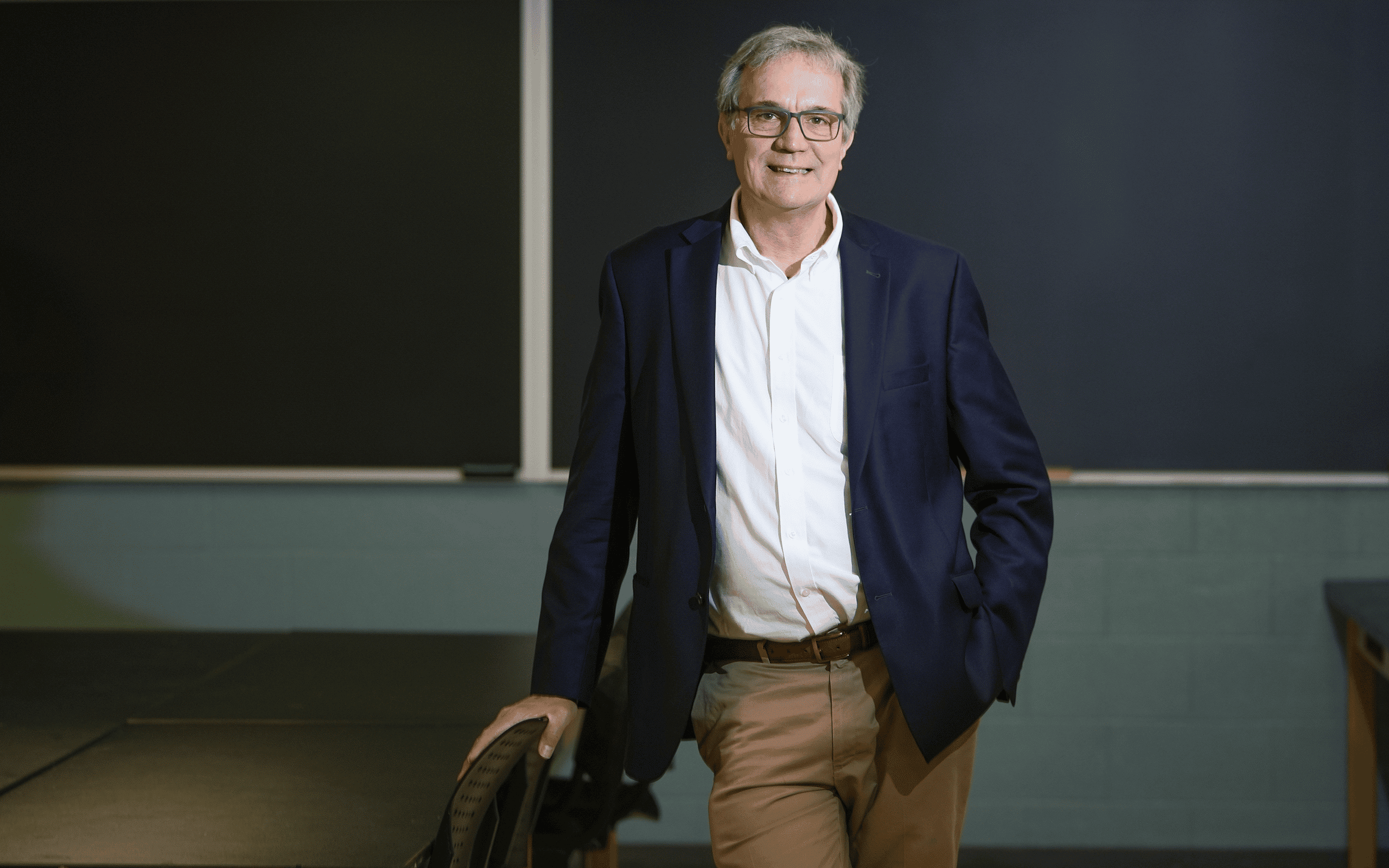From Art 101 to Engineering 100: A Liberal Arts Story of Systems Thinking
Dr. John Krupczak
The liberal arts are fertile ground for serendipitous connections, for driving research across fields and spurring new ways of thinking within them. Dr. John Krupczak Jr., professor of engineering, has another term for it: systems thinking.

It’s the sort of thinking that sparked the mechanical engineer’s desire to publish an engineering book that non-scientists can understand, a quest that in 2023 culminated in Understanding Technological Systems. It’s the sort of thinking that germinated Science and Technology in Everyday Life, a course he launched when he joined the Hope College faculty 29 years ago. It’s the sort of thinking that connects Art 101 with Intro to Engineering — and not just hypothetically.
In his senior year of college in New England, Krupczak enrolled in Art 101. “I was a science person, and this was the most amazing, eye-opening, Wow, now I understand why Notre Dame is such an important cathedral, and now I understand the difference between Renoir and van Gogh and Leonardo experience,” he says. Later, his art-major girlfriend (now his wife) suggested Krupczak could teach that way about technology, so that “art people” like her could understand it better. On the cusp of being hired by Hope College, he took the plunge.
“Assembling something from its basic pieces gives you, number one, a sense of the structure — how it all goes together — and then, number two, a kind of empowerment. “You’re not, maybe, as intimidated by it, because you know how it came together from its individual parts.”
Asked at his Hope job interview what he would like to do to make a stint at the college worthwhile, Krupczak voiced his vision: “‘I’ve always been interested in teaching a class on technology for non-science people, non-engineers. That’s something I’m interested in; would that be a possibility?’ Little did I know, that helped me get the job.” At that time, Hope had no engineering courses designed for non-science majors. Science and Technology of Everyday Life was popular from the very start.
“The art class was the model,” he says. “I think engineering owes liberal arts this; we owe higher education something like this. Engineers benefit from history and English and psychology, and all these other disciplines can contribute to the liberal arts in an authentic way with their thoughts and ideas and subject matter and things that are accessible at an introductory level.” Science and Technology of Everyday Life is an engineering contribution in that vein, introducing students of all disciplines to the technological systems we depend on, often unconsciously.
In the course’s lab sessions, students disassemble and reassemble a car engine. They learn about solar panels, and then construct a circuit to connect them to power banks, which in turn charge their phones. They build simple radios. An alumnus of the course, one who didn’t major in a STEM field, looped back to Krupczak to report that on his first day working at a Grand Rapids TV station, he was the only new employee who knew what AM and FM stand for — thanks to Science and Technology of Everyday Life. (It’s amplitude modulation and frequency modulation.)
“Assembling something from its basic pieces gives you, number one, a sense of the structure — how it all goes together — and then, number two, a kind of empowerment,” Krupczak says. “You’re not, maybe, as intimidated by it, because you know how it came together from its individual parts.” Tracking his students’ learning, he has found that their confidence and perceptions of their abilities increase as the course progresses.
“Student participation has been absolutely essential,” he adds. Student researchers have suggested specific projects, including the engine lab.
Input from engineering students was also key to Krupczak’s next idea: integrating Science and Technology of Everyday Life with his department’s introductory course. The engineering majors who assisted Krupczak in his Science and Technology labs asked when they would get to do similar projects in their own engineering classes; he had to break the news that they would not.
But, he mused, why couldn’t hands-on construction be an engineering class staple?
“That led me to completely reconfigure Introduction to Engineering to include this technological system framework,” Krupczak says. “You could say that basically every engineering major now is benefitting from this, because it’s made our engineering course much more engaging.” Someday, Krupczak hopes, the two courses can fully combine, so engineering majors and other students can learn together — and from one another. “They can benefit from each other,” he says. “The perspective of the non-engineering students would be valued by the engineering students, and vice versa.”
Engineering pedagogy has been on Krupczak’s mind and in his work for decades. In the late 1990s, he was among the founding members of the Technological and Engineering Literacy/Philosophy of Engineering (TELPhE) Division of the American Society for Engineering Education. The throughline continues with his efforts to make the subject accessible both in the classroom and in engineering literature.
Systems thinking, inspired by his art class decades ago and the Hope STEM class that’s been running for decades since, was the impetus for Krupczak’s 15-years-in-the-making book released by Springer in November 2023. He recalls sitting down on his August birthday in 2008 to outline it. (“These are my chapters: boom, boom, boom — no problem,” he thought. “I’ll be done by Christmas!”) The project was more circuitous than he anticipated: On his birthday in 2023, Krupczak sent the completed manuscript to his publisher.
He compares the writing process to “making a puzzle” — or, perhaps, assembling an engine or a hands-on science course. His book melds engineering design and engineering science, emphasizing the connections and components behind both the mathematics and the finished products that comprise engineering.
Krupczak invokes inventor Robert Fulton’s 1796 observation that as letters of the alphabet are to a poet, so are physical components — levers, wedges and wheels — to an engineer.
“That’s the perspective I wanted to emphasize in my book,” he says, “because I think it’s absent from both engineering and the liberal arts — this idea of being able to analyze a certain physical circumstance from the point of view of the system.”
Engineering pedagogy has been on Dr. John Krupczak’s mind and in his work for decades. In the late 1990s, he was among the founding members of the Technological and Engineering Literacy/Philosophy of Engineering (TELPhE) Division of the American Society for Engineering Education.
 The course Science and Technology of Everyday Life introduces students of all disciplines to the technological systems we depend on, often unconsciously. The same priority led to Dr. John Krupczak’s 2023 engineering book for non-scientists, Understanding Technological Systems.
The course Science and Technology of Everyday Life introduces students of all disciplines to the technological systems we depend on, often unconsciously. The same priority led to Dr. John Krupczak’s 2023 engineering book for non-scientists, Understanding Technological Systems.
